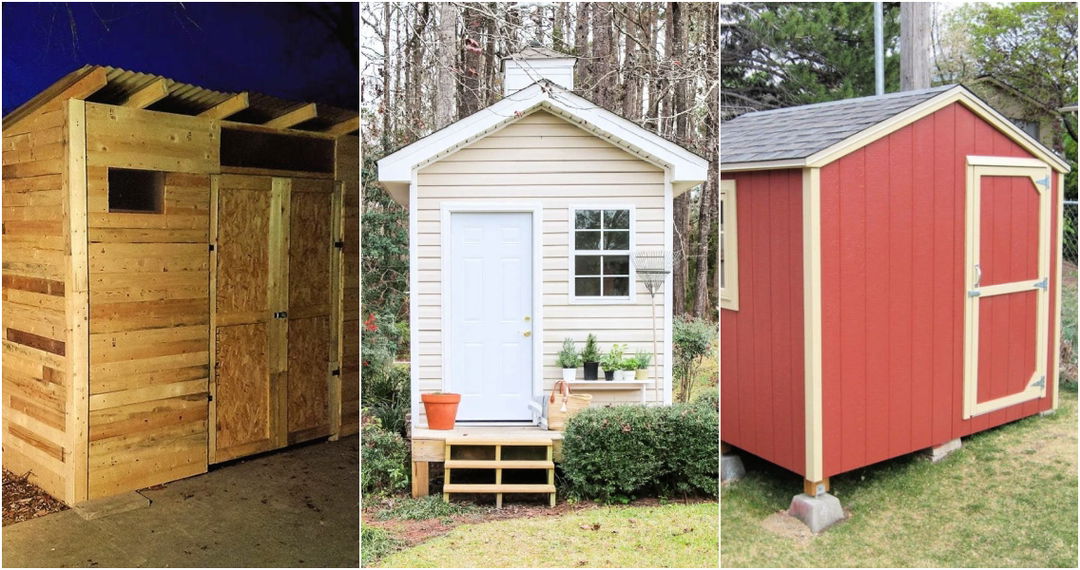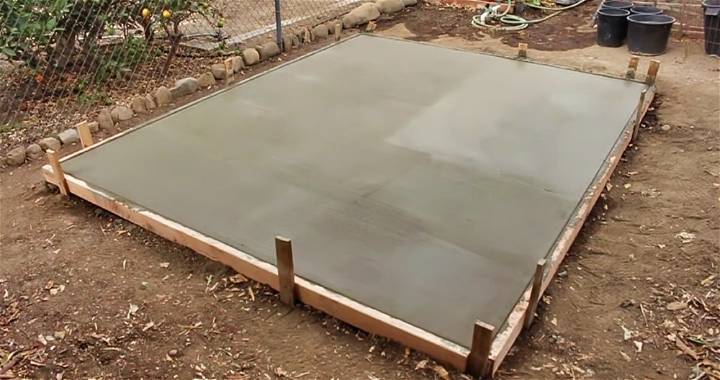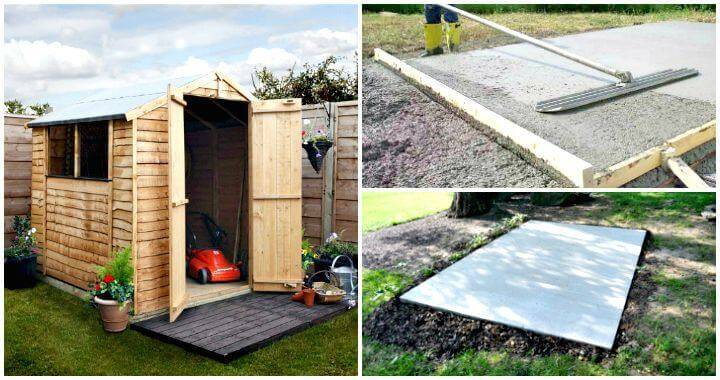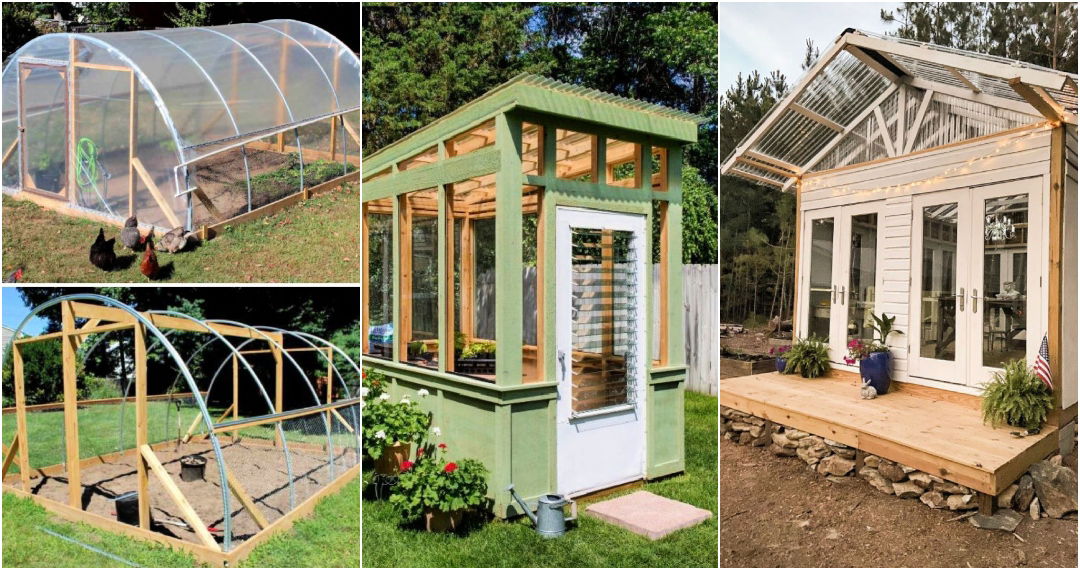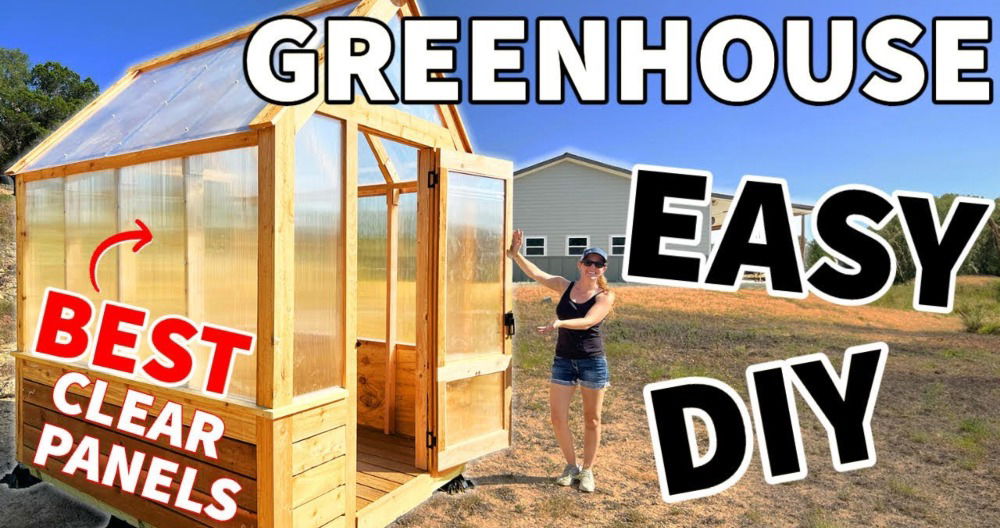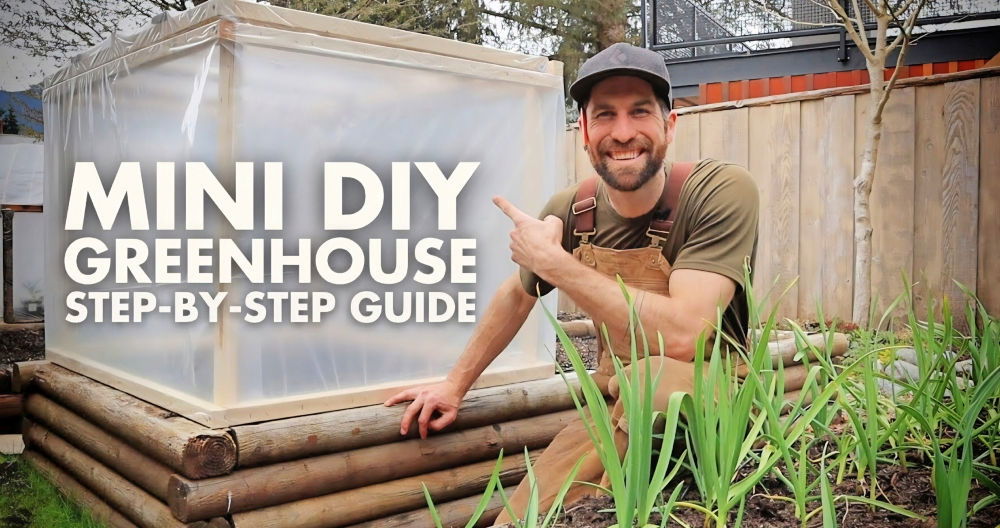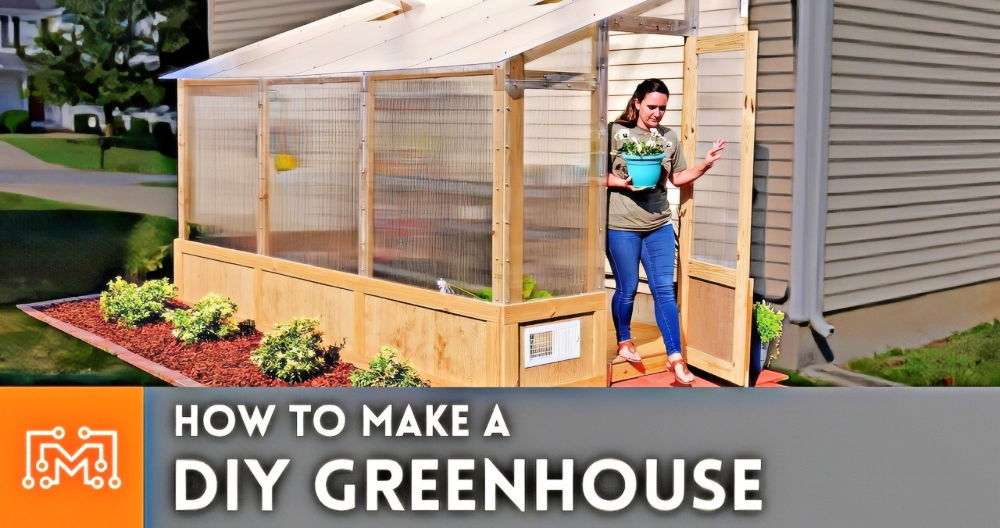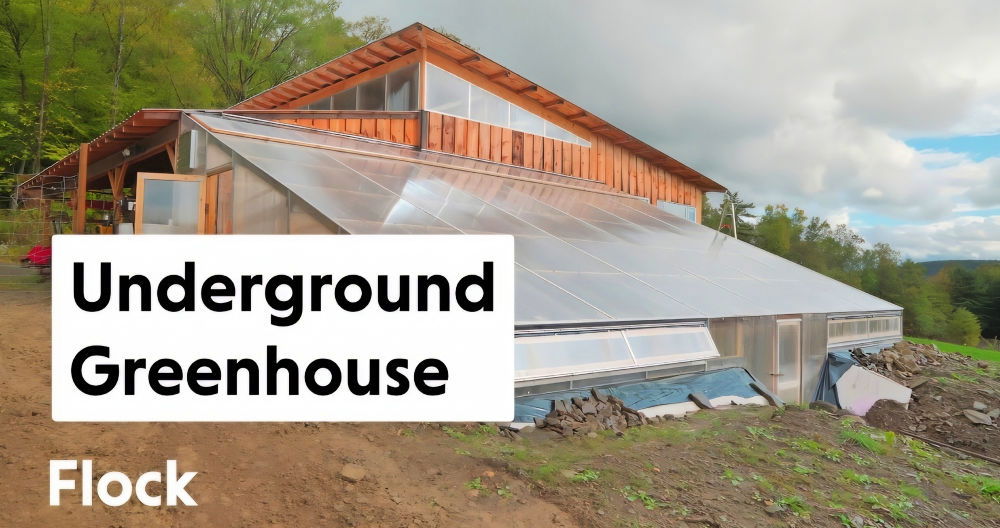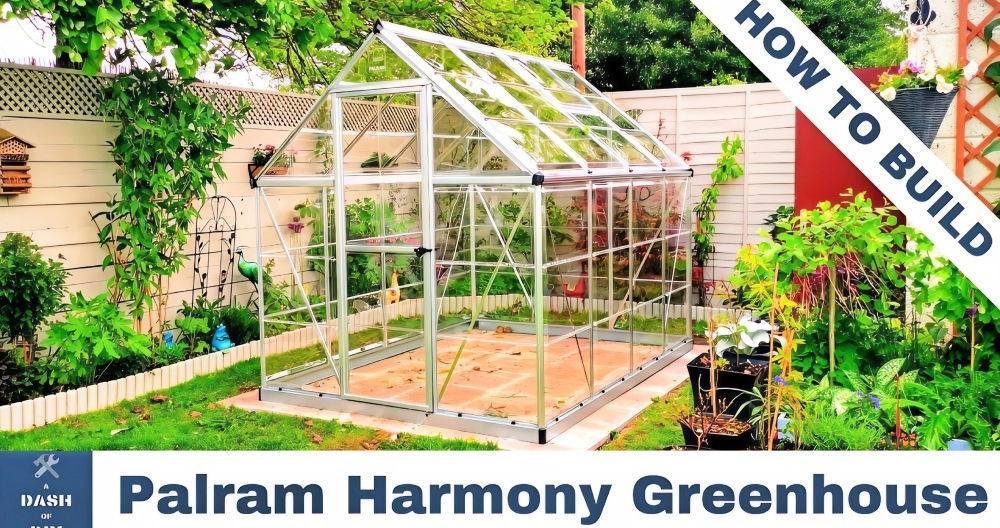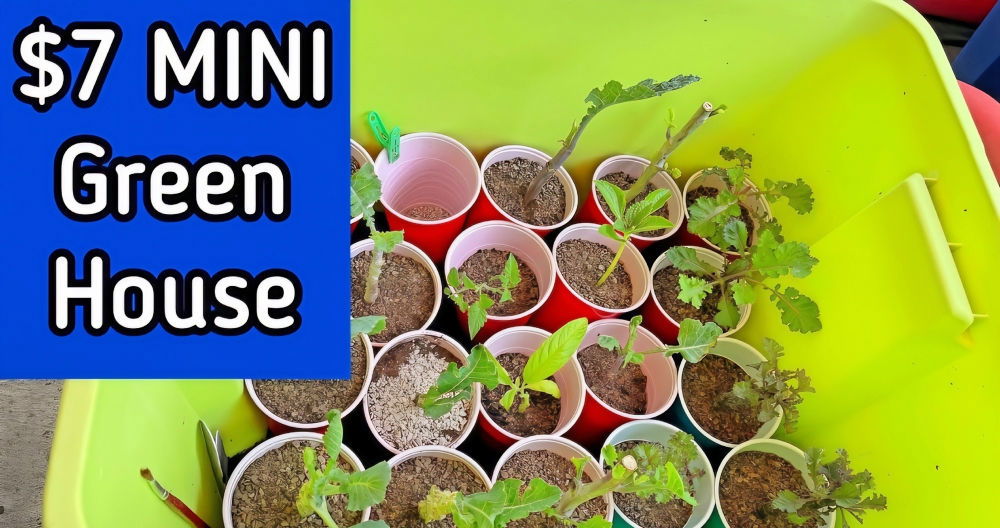When I started my gardening journey, I needed more space for my tools and seedlings. A DIY shed greenhouse combo seemed like the perfect solution. It offers storage and a place for my plants to grow all year round. Building it was easier than I thought, and the rewards have been amazing. I can now keep everything organized and my plants happy.
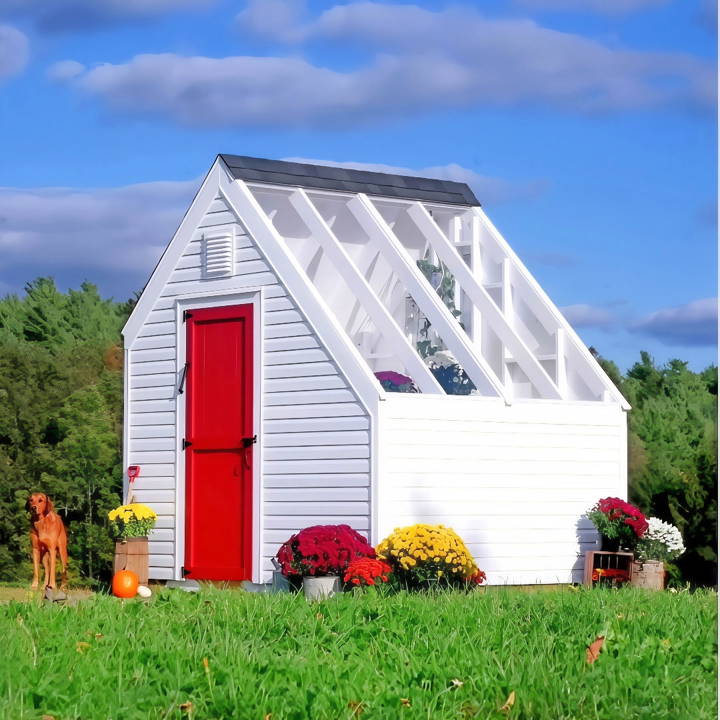
Combining a half shed, half greenhouse gave me the best of both worlds. The shed side holds my tools and supplies, while the greenhouse side nurtures my seedlings and delicate plants. It's compact yet roomy enough for all my needs. If you love gardening and need more space, building a DIY greenhouse shed combo is a great idea.
I'm excited to share this experience. Building it can truly transform your gardening space and help your plants thrive. These steps will guide you in making your own DIY shed greenhouse combo.
Why a Greenhouse/Shed?
Our goal was clear: build a space where we could nurture our plants from seedlings to harvest, regardless of the season. The dual-purpose structure would serve as a shed for our gardening tools and a greenhouse to protect and prolong our growing season. We wanted to be less dependent on grocery stores, ensuring a steady supply of fresh produce right from our backyard.
Materials Needed and Their Importance
- Lumber - The skeleton of our structure. We chose pressure-treated wood for its durability against rot and pests.
- Polycarbonate Sheets - For the greenhouse walls and roof. They allow sunlight in but keep harsh weather out.
- Hardware (Screws, Hinges, etc.) - Essential for assembling and securing the structure.
- Tools (Saw, Hammer, Drill, etc.) - For cutting the lumber to size and assembling the structure.
- Weatherproofing Materials - To ensure the longevity of our greenhouse/shed against moisture and extreme temperatures.
Quality materials are crucial for a structure that withstands time and elements, maintaining a safe environment for plant growth and storage.
Step by Step Instructions
Follow our DIY shed greenhouse combo guide to build your own. from planning to weatherproofing, get step-by-step instructions to complete your project.
Step 1: Planning and Design
We began by brainstorming the size and layout, keeping in mind our garden's needs and space restrictions. It was essential to have a clear vision of the structure, considering factors like sun exposure and accessibility. Sketching out a design helped us visualize the project and guided us in purchasing materials.
Step 2: Foundation and Frame
We laid a solid foundation to ensure stability and level ground. Then, we constructed the frame, focusing on a sturdy structure to support the polycarbonate sheets and withstand strong winds. This step required precision and patience, as a strong frame is crucial for the overall durability.
Step 3: Installing Polycarbonate Sheeting
Attaching the polycarbonate sheets was a delicate task. We chose sheets for their durability and light transmission properties, vital for plant growth. Carefully, we secured the sheets to the frame, ensuring there were no gaps where heat could escape or pests could enter.
Step 4: Weatherproofing
This stage was critical, especially after experiencing a scare with a hurricane approaching. We ensured every joint and seam was sealed and added extra braces for reinforcement. The effort paid off as our structure withstood the storm without significant damage, a testament to our planning and materials.
Step 5: The Finishing Touches
Finally, we focused on aesthetics and functionality, painting the structure to match our barn and installing a rainwater collection system. We added shelving inside the greenhouse for plants and organized space for our gardening tools in the shed area.
The Full Circle
Months after completing our greenhouse/shed, we've realized the benefits multiple-fold. Not only did we have the pleasure of enjoying fresh produce, but we also learned a great deal about resilience, both in terms of gardening and construction.
Weather Challenges and Solutions
The unexpected hurricane tested our structure's integrity. By bracing it with round bales and ensuring it was well-anchored, we mitigated potential damage. This experience taught us the importance of preparing for extreme weather, reinforcing the idea that a sturdy build and proactive measures are crucial.
Lessons Learned
- Start with a clear plan: Understanding what you want to achieve helps guide your decisions and purchases.
- Invest in quality materials: This ensures durability and longevity.
- Prepare for the unexpected: Weather can be unpredictable; building with resilience in mind is essential.
- Learning is ongoing: Each step presented new challenges, teaching us more about construction, gardening, and resilience.
Advanced Ventilation Systems
Ventilation is vital for greenhouses, including shed combos. It regulates temperature, ensures airflow, and supplies carbon dioxide for photosynthesis. Here are advanced yet simple ventilation systems you can use.
Natural Ventilation
Natural ventilation is the simplest and most cost-effective method. It relies on the natural flow of air to maintain the right climate inside your greenhouse. Here's how you can achieve it:
- Roof Vents: Install vents on the roof of your greenhouse. Warm air naturally rises and escapes through these, drawing in cooler air from below.
- Side Vents: Place vents or windows on the sides of your greenhouse to allow cross-ventilation. This helps to keep the air moving and prevents hot spots.
Automated Vent Openers
For a more advanced setup, consider automated vent openers. These devices automatically open and close vents based on the temperature inside the greenhouse. They work without electricity, using a wax cylinder that expands and contracts with heat.
Solar-Powered Fans
Solar-powered fans are another excellent option for maintaining airflow. They're environmentally friendly and reduce the need for electrical wiring. Position them strategically to build a consistent flow of air.
Tips for Effective Ventilation
- Monitor Temperature: Keep a thermometer inside your greenhouse to track the temperature. Adjust your ventilation accordingly.
- Regular Maintenance: Check your vents and fans regularly to ensure they're not blocked by debris or plant growth.
- Balance Humidity: Use a hygrometer to monitor humidity levels. Too much humidity can lead to mold and plant diseases.
Use advanced ventilation to ensure a healthy environment for your plants and boost your shed greenhouse's success. Balance temperature, humidity, and airflow for the best growth.
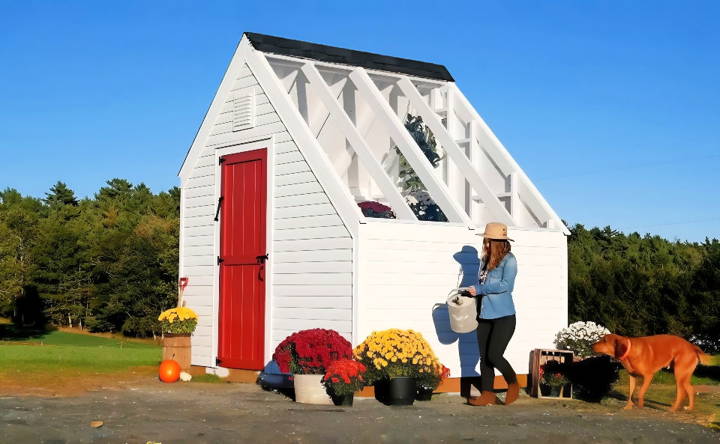
Integrated Watering Solutions
Water is the lifeblood of any garden, and a well-designed watering system is key to a thriving shed-greenhouse combo. Here's how you can integrate smart watering solutions:
Drip Irrigation System
Drip irrigation is a water-efficient method that delivers water directly to the roots of your plants. It involves a network of pipes that slowly drip water, reducing evaporation and water waste.
Rainwater Harvesting
Rainwater harvesting involves collecting rainwater from your shed roof and storing it for later use. It's sustainable and reduces your water bill. Use a simple barrel or a more complex storage system to collect and filter the rainwater.
Soil Moisture Sensors
Incorporate soil moisture sensors to monitor the wetness of your soil. These devices can alert you when your plants need water, ensuring you only water as necessary.
Tips for Watering
- Regular Checks: Inspect your system regularly for leaks or clogs.
- Mulching: Apply mulch around your plants to retain moisture.
- Watering Schedule: Water early in the morning or late in the evening to minimize evaporation.
Pest Management Strategies
Pests can be a real problem in any garden. Here are some strategies to manage them effectively:
Physical Barriers
Use physical barriers like nets or floating row covers to keep pests away from your plants. They're simple and don't involve chemicals.
Beneficial Insects
Introduce beneficial insects like ladybugs or lacewings into your greenhouse. They prey on harmful pests and help maintain a natural balance.
Organic Pesticides
If you must use pesticides, opt for organic options. They're less harmful to the environment and your plants.
Tips for Pest Management
- Regular Monitoring: Check your plants often for signs of pests.
- Cleanliness: Keep your greenhouse clean to prevent the spread of pests.
- Plant Diversity: Grow a variety of plants to deter pest infestations.
Maintenance and Upkeep
Maintaining your shed-greenhouse combo is crucial for its longevity and the health of your plants. Regular upkeep ensures that your gardening space remains a productive and enjoyable place. Here's a straightforward guide to maintaining your shed greenhouse:
Regular Cleaning
Cleanliness is next to greenliness! Keep your greenhouse glass or plastic panels clean to maximize light penetration. A simple solution of soapy water and a soft sponge can do the trick. Don't forget to clear out any plant debris, as this can harbor pests and diseases.
Check for Damage
Weather and time can wear down your structure. Look for cracks in the panels, rust on metal parts, and rot in wooden frames. Early detection means easier repairs. Seal any gaps with appropriate caulking or replace damaged parts as needed.
Pest and Disease Control
Keep an eye out for unwelcome visitors. Regularly inspect your plants for signs of pests or disease. Remove affected plants to prevent spread, and consider natural remedies like neem oil for treatment.
System Checks
If you have automated systems for watering or ventilation, check them periodically. Ensure that timers are set correctly and that sensors are functioning. Replace batteries or make adjustments as necessary.
Structural Integrity
Your shed greenhouse should stand strong against the elements. Make sure that all bolts are tightened and that the structure is securely anchored to the ground. This will prevent damage from strong winds or heavy rain.
Organize Your Space
A tidy greenhouse is more efficient. Organize your tools and supplies in a way that makes them easily accessible. Use shelves, hooks, and storage boxes to keep everything in order.
Seasonal Adjustments
As seasons change, so do the needs of your greenhouse. Add insulation for the winter months to keep your plants warm. During the summer, ensure that shading is in place to prevent overheating.
By following these maintenance tips, you'll ensure that your shed greenhouse remains a vibrant and productive space for years to come.
FAQs About DIY Shed Greenhouse Combo
Discover answers to common questions about DIY shed greenhouse combos. Learn tips, benefits, and essentials for your garden project.
A DIY shed greenhouse combo is a structure that combines the storage space of a shed with the plant-growing environment of a greenhouse. This space-saving solution allows you to store gardening tools and grow plants in a single, convenient location. It’s ideal for gardeners with limited outdoor space but a big passion for growing their own plants.
Building a shed greenhouse combo can be beneficial for several reasons:
Space Efficiency: It maximizes the use of your outdoor area by merging two structures into one.
Cost-Effective: It's often more affordable than constructing two separate buildings.
Convenience: Having your tools and plants in one place makes gardening tasks more efficient.
Customizable: You can design the combo to fit your specific gardening needs and preferences.
To manage moisture and temperature:
Ventilation: Install vents or fans to circulate air and control humidity.
Insulation: Use insulation materials to maintain a consistent temperature.
Thermometer and Hygrometer: Monitor the temperature and humidity levels.
Shading: Use shading materials to protect plants from excessive sunlight.
Yes, some common issues include:
Moisture Control: The greenhouse can produce excess moisture that may affect the shed area. Use moisture-resistant materials and ensure good ventilation to prevent mold or rot.
Temperature Regulation: Balancing the heat in the greenhouse and the shed can be challenging. Automated vent openers and thermostats can help maintain optimal temperatures.
Pest Control: Pests attracted to the greenhouse plants may also affect the shed. Seal gaps and use organic pesticides to keep pests at bay.
Yes, you can build a shed greenhouse combo even in a small backyard. Here are some tips to make the most of your space:
Compact Design: Opt for a vertical or lean-to design that takes up less ground space.
Multipurpose Features: Incorporate foldable workbenches and vertical gardening systems to maximize the area.
Proper Planning: Measure your space and plan the layout carefully to ensure everything fits without overcrowding.
Local Regulations: Check with your local building authorities to understand any restrictions or permits required for your project.
Conclusion
In conclusion, a DIY shed greenhouse combo is an ideal solution for gardeners looking to maximize their space and resources. This half shed half greenhouse setup offers practical benefits, from storage to efficient plant growing. By combining a shed and greenhouse, you can enhance your gardening experience and make the most out of your garden space.


